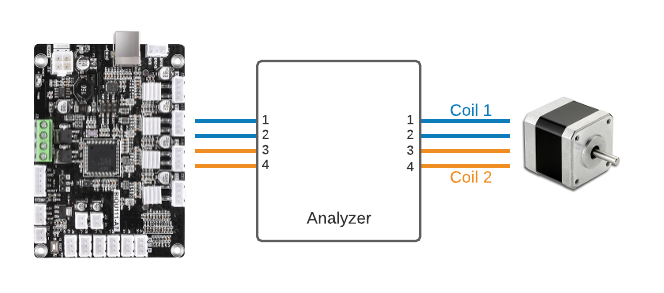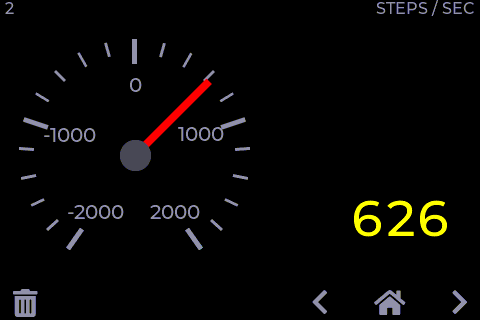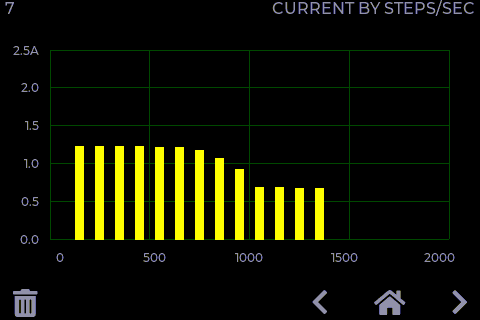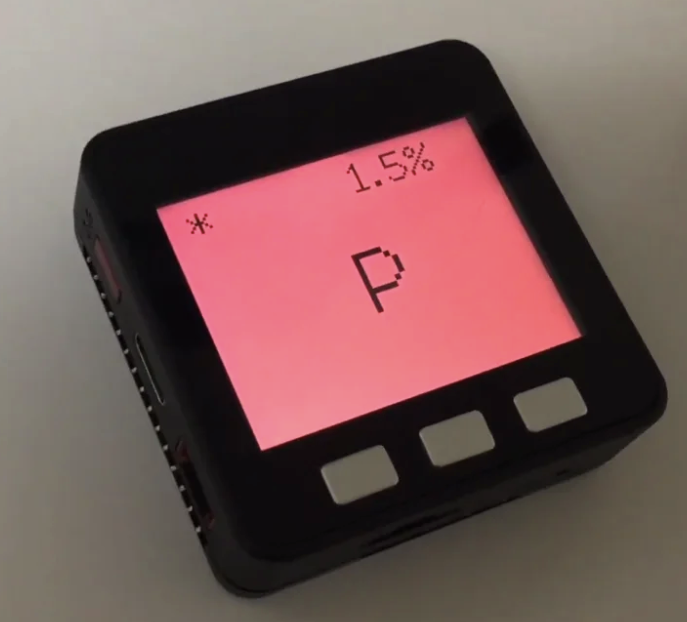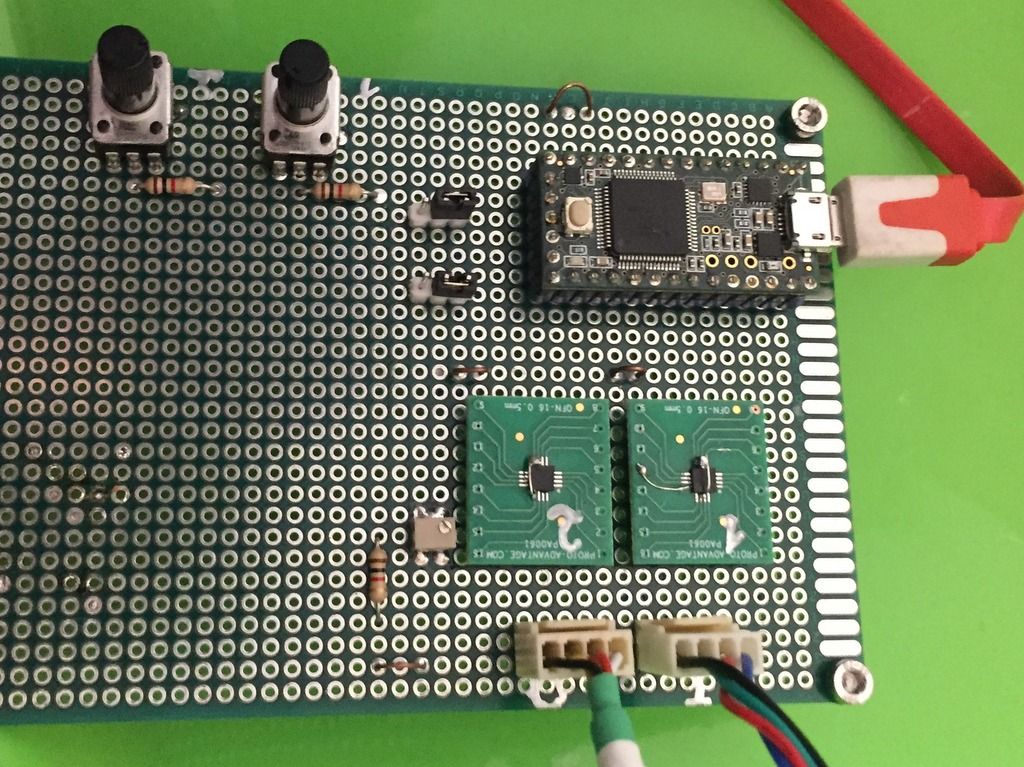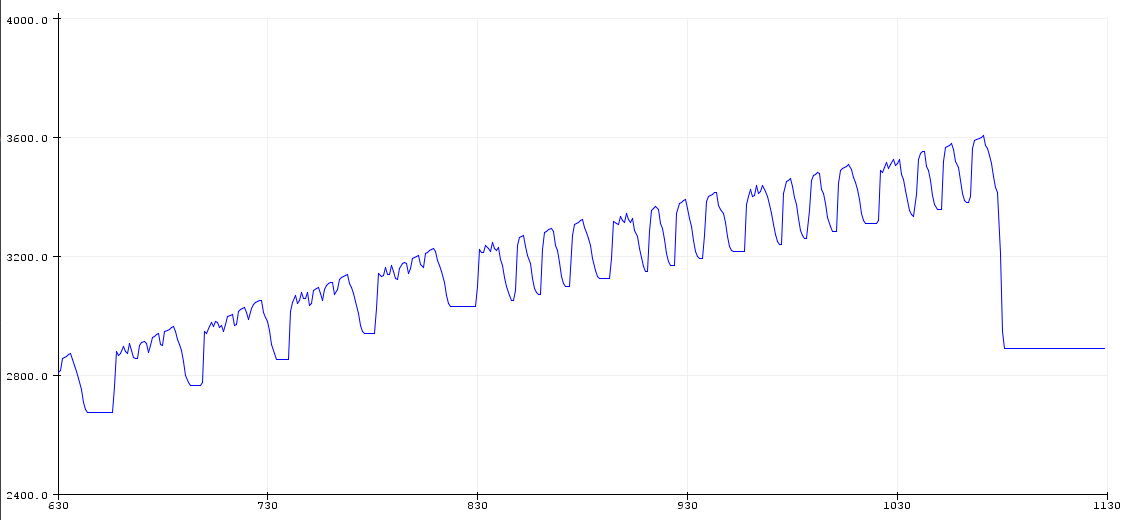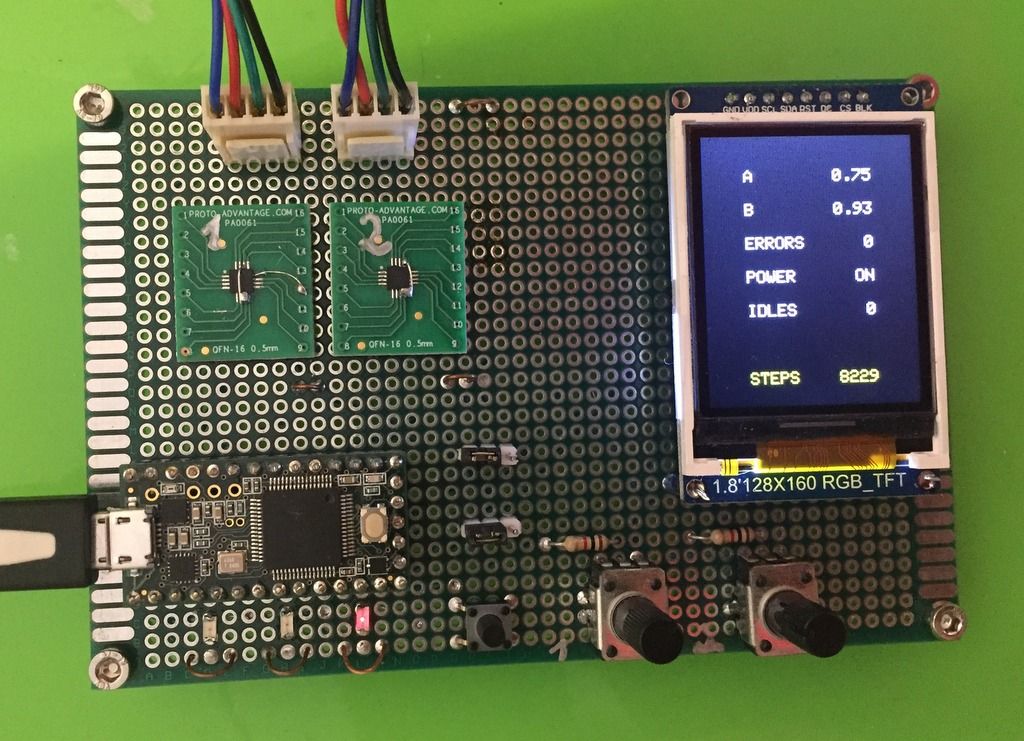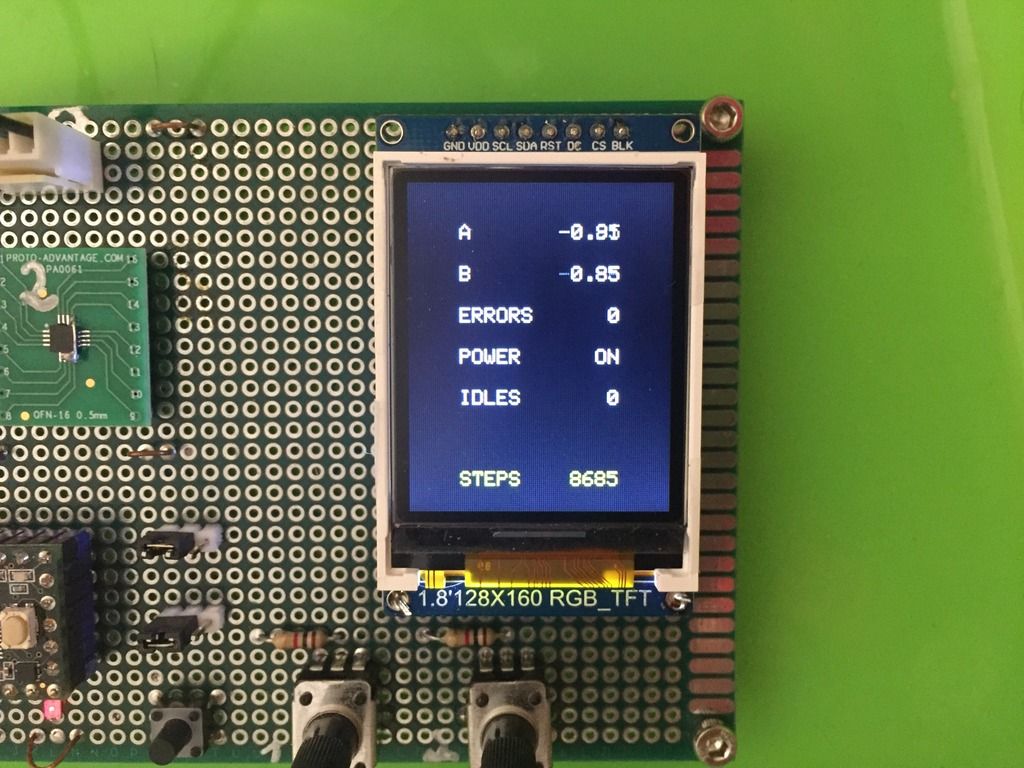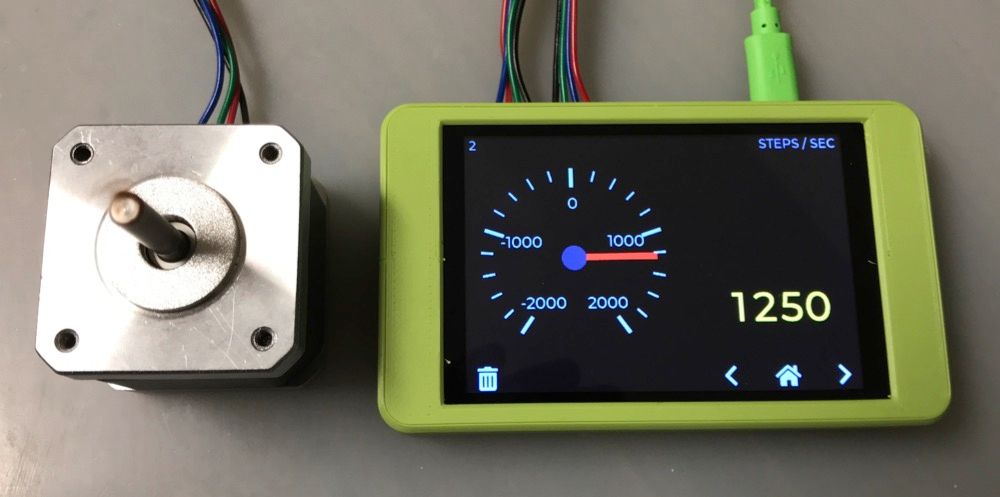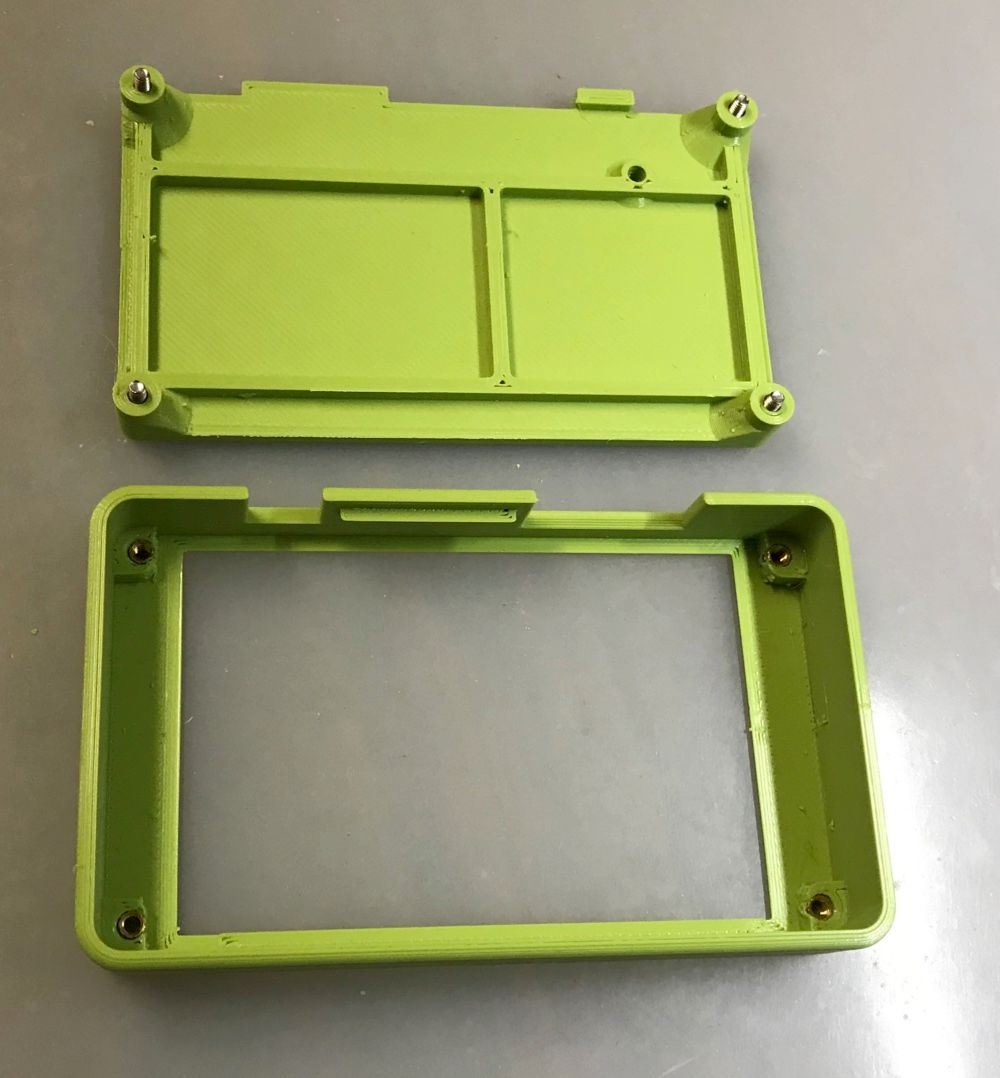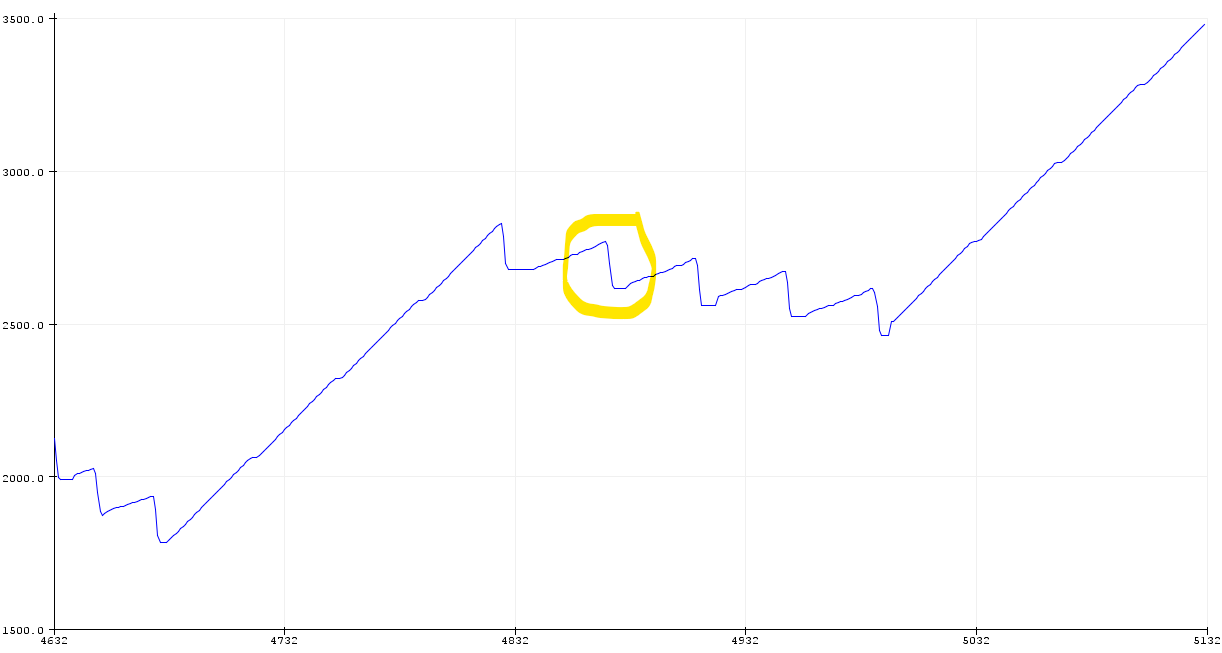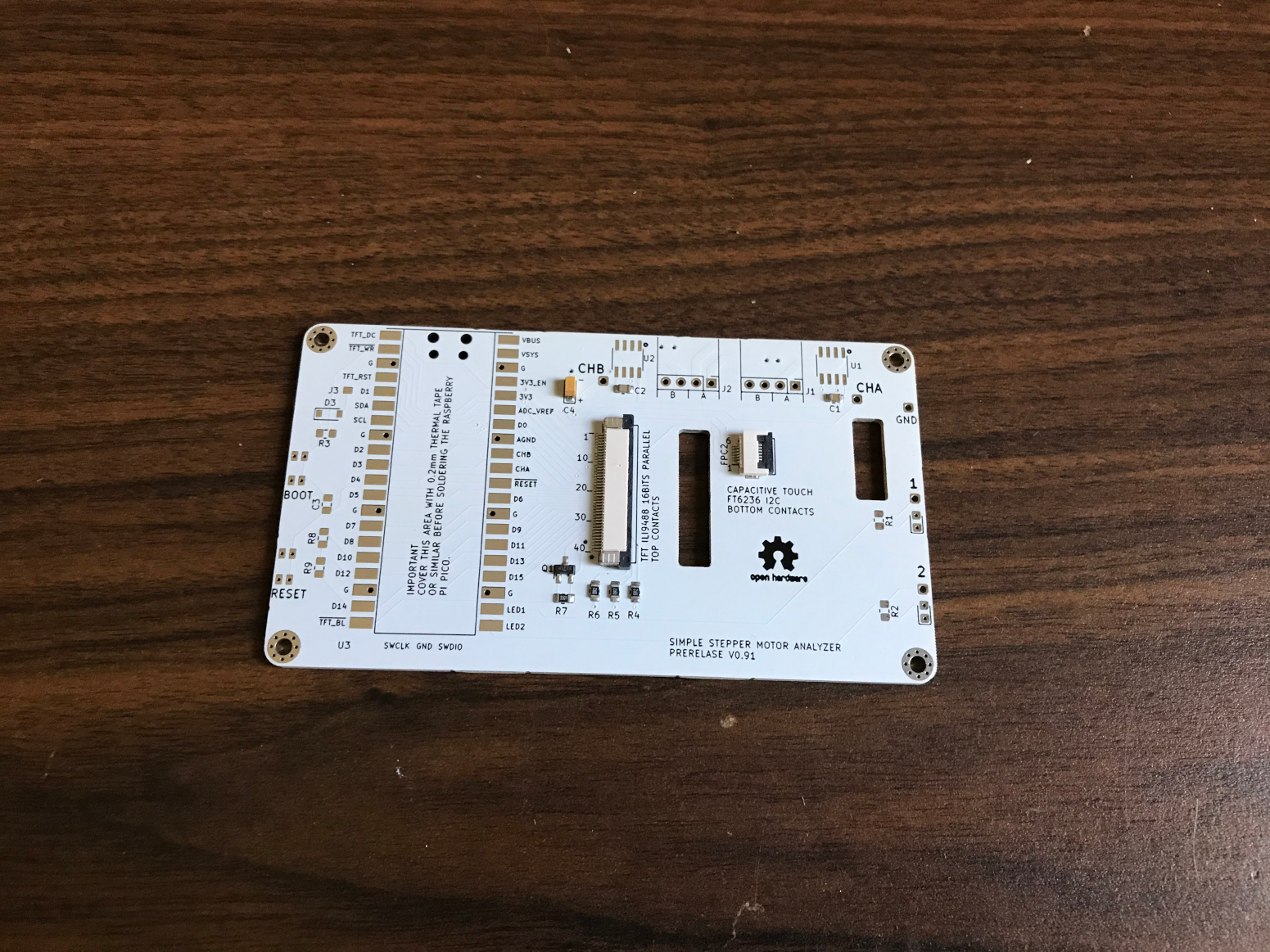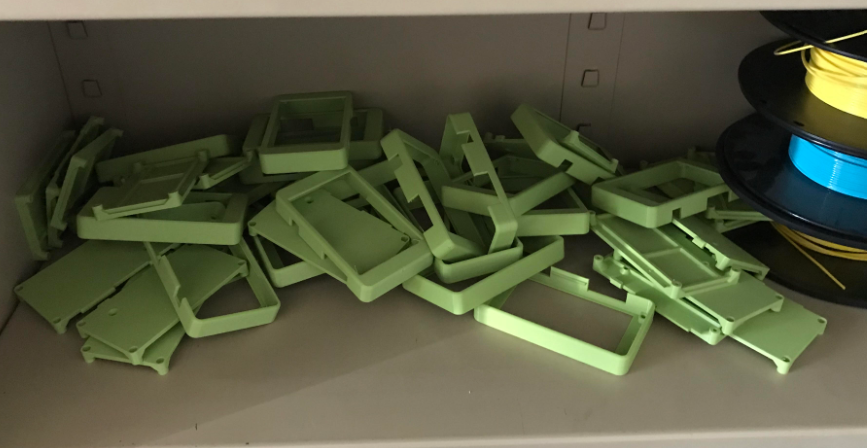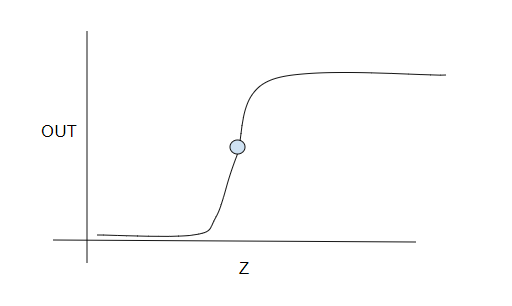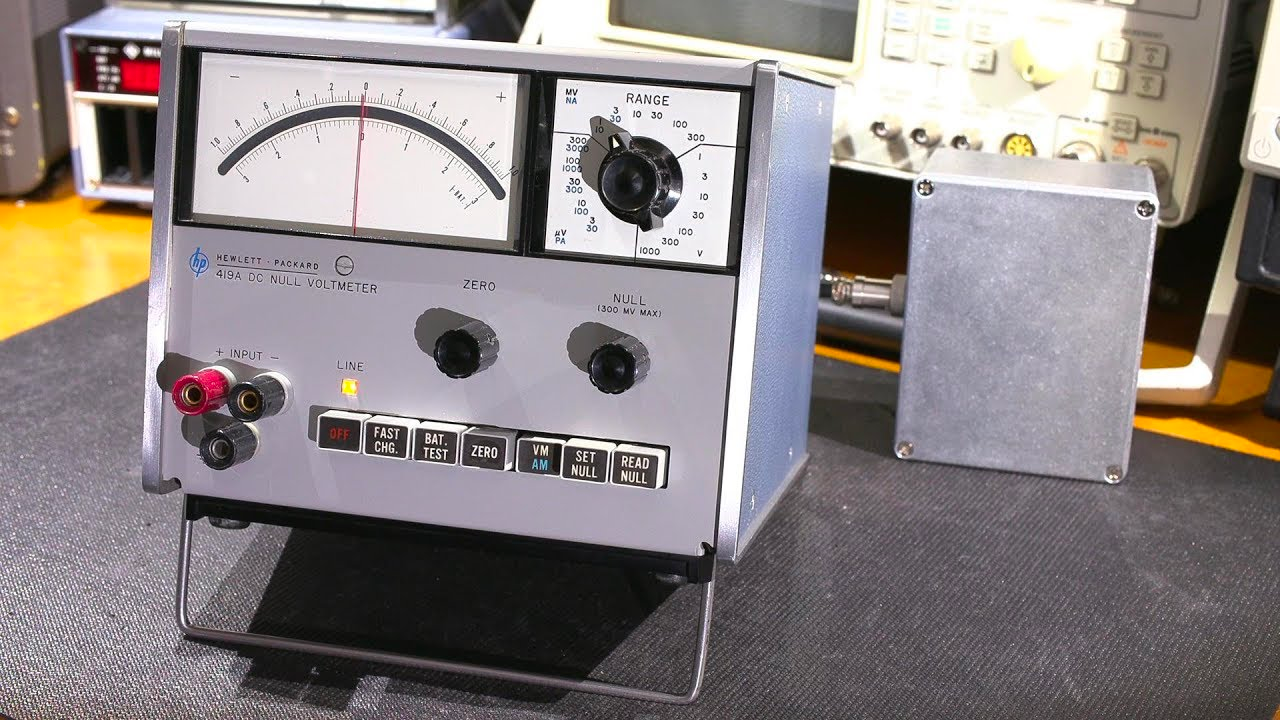Hi everybody,
Last year I posted here a DYI design of a stepper motor analyzer that was based on teensy 4.0 (600Mhz processor, at $20 a piece) and a 3.5 Nextion smart TFT(~$35).
Since then I worked on and off on a simpler and less expensive design and it works even better. This design uses a 3.5" 'dumb' TFT with a capacitive touch, and ~$3 'blackpill' STM32F401CE board from Ali Express.
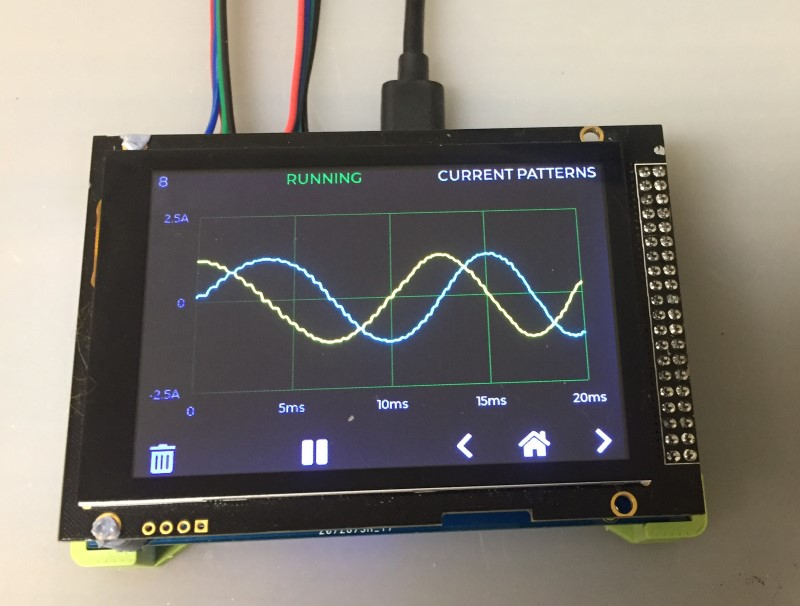
The hardware design is trivial, with a blackpill module, two small current sensors and a EEPROM to save the settings, and it has a 40pin connector that plugs into the TFT screen. All the heavy lifting, including the signal processing, extraction of stepper measurements and user interface are done by the firmware.
Github repository and documentation are here https://github.com/zapta/simple_stepper_motor_analyzer and electrical schematic is here https://github.com/zapta/simple_stepper_motor_analyzer/blob/master/kicad/stepper_analyzer-sch.pdf .
I may be able to make a few available for cost, especially for developers that want to add functionality (C++, Platformio under VSCode, programming/debugging using stlink V2). Flashing of new boards can be done with DFU software over USB, no tools of dongles required).
If you want to build one, or ten, or a thousand and have questions, I will be happy to answer. The connectors BTW are duet2 compatible. 
